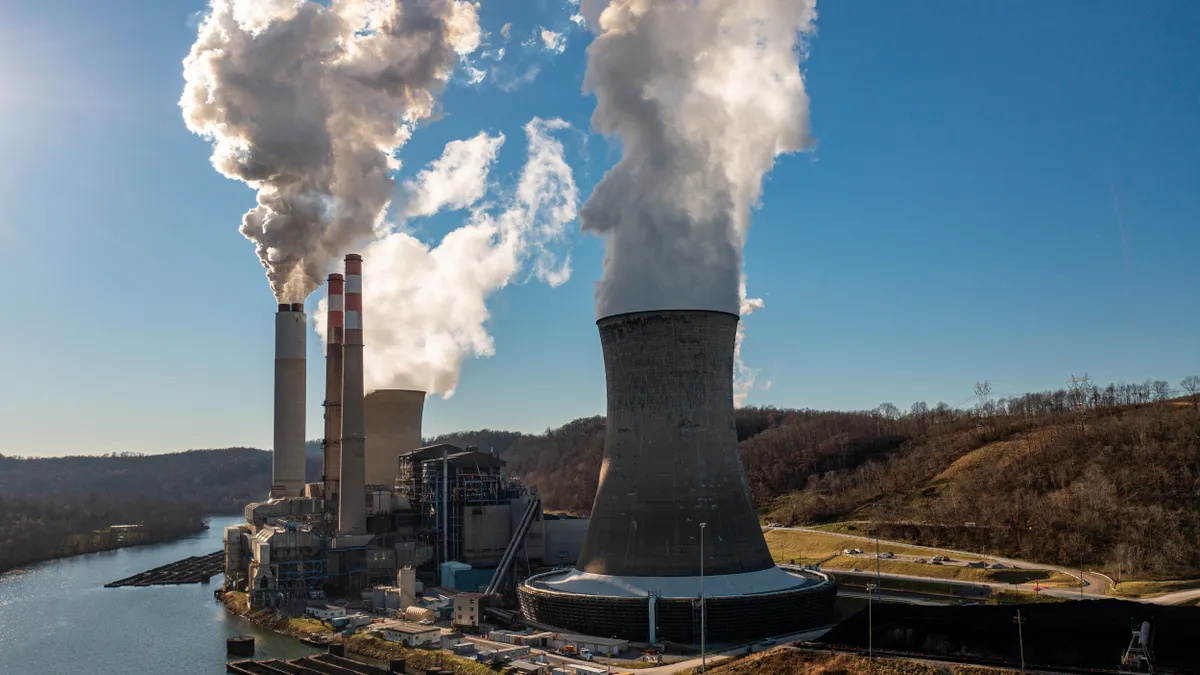The U.S. Court of Appeals for the District of Columbia Circuit on Friday rejected requests to put a hold on an Environmental Protection Agency rule limiting greenhouse gas emissions from power plants while litigation plays out.
Under the EPA’s rule issued in April, the owners of coal-fired and new gas-fired power plants set to operate past 2039 will be required to meet a carbon dioxide emission standard equal to installing a carbon capture and storage system and running it at 90% efficiency, with compliance beginning in 2032.
Some groups — including the National Rural Electric Cooperative Association and the National Mining Association — plan to ask the U.S. Supreme Court to overturn the appeals court decision and stay the rule while litigation is underway.
“EPA’s power plant rule is unlawful, unrealistic and unachievable,” NRECA CEO Jim Matheson said in a statement. “It undermines electric reliability and poses immediate and grave consequences for an already stressed electric grid.”
The appeals court, however, disagreed that the rule’s implementation posed an immediate, irreparable harm.
“Actual compliance deadlines do not commence until 2030 or 2032 — years after this case will be resolved,” the court said. States must submit implementation plans to meet the rule by May 2026, but the only consequence for failing to submit a state plan is the promulgation of a federal plan, which the states can replace with their own plans later, the court said.
Also, NRECA and others seeking a stay failed to show they are likely to succeed in their claims, the court said. They contend the EPA was wrong to conclude that carbon capture and other emission control technologies are adequately proven and that specific degrees of emission reduction are achievable with those technologies, according to the court.
Further, the case does not implicate the major question’s doctrine because the EPA “has claimed only the power to ‘set emissions limits under Section 111 based on the application of measures that would reduce pollution by causing the regulated source to operate more cleanly[,]’ a type of conduct that falls well within EPA’s bailiwick,” the court said.
The doctrine, established in 2022 by the Supreme Court, bars agencies from issuing regulations with “vast economic and political significance” without clear statutory authority.
The Natural Resources Defense Council supported the court’s ruling. “The D.C. Circuit judges said that EPA’s rules are squarely in its lane and found that power companies and recalcitrant states are unlikely to prevail on the merits in this case,” Meredith Hankins, a senior attorney at NRDC, said in a statement.
“The idea that power producers need immediate relief from modest standards that start to kick in eight years from now was obviously absurd. And states have plenty of time to begin their planning process,” Hankins said.
The EPA’s carbon reduction rule for power plants triggered lawsuits from a host of organizations, including a group of states led by West Virginia, the Edison Electric Institute, a trade group for investor-owned utilities, Oklahoma Gas and Electric, Idaho Power, Montana-Dakota Utilities and others. The appeals court consolidated the suits.
The power sector accounts for 25% of U.S. greenhouse gas emissions, making it the second largest source of carbon emissions in the country behind transportation, according to the EPA.















